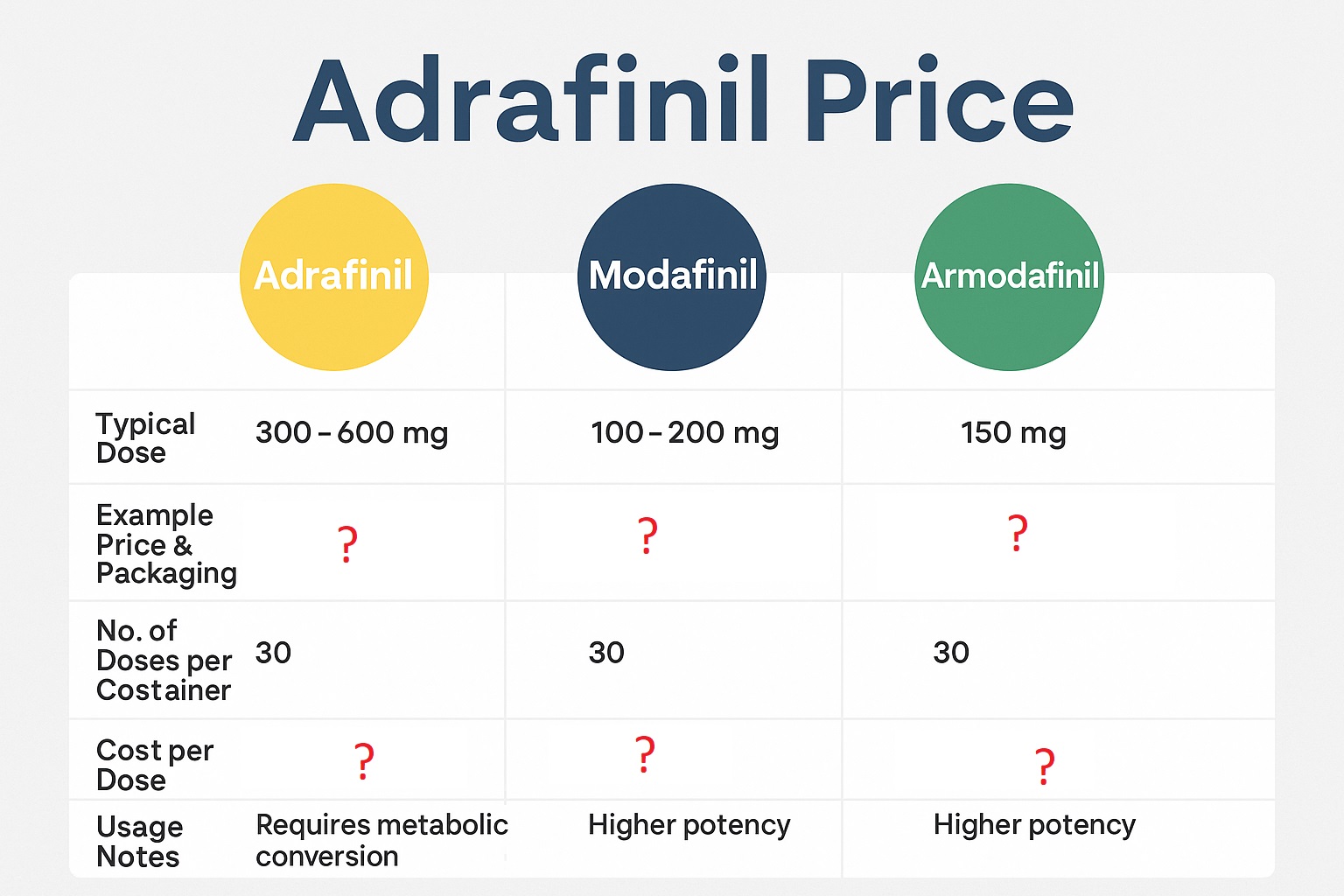Adrafinil sits in a quirky corner of the nootropics market: it’s unscheduled in many countries, sold as a research chemical or dietary supplement, and manufactured by a mix of nutraceutical brands and bulk chemical suppliers. That makes prices highly variable across regions, formats, and quality tiers. This guide explains what adrafinil price, typical price bands, and how to compare cost-per-dose so you can evaluate value without getting burned.
What Drives Adrafinil Price?
- Regulatory posture & import friction
- Manufacturing quality & testing
- Format & convenience
- Order size & logistics
- Brand positioning
Typical Price Bands (Informational)
- Capsules 300–600 mg (60–90 count): higher due to convenience.
- Capsules 120–300 count: better value per dose.
- Bulk powder 25–50 g: lower price per gram; needs a precision scale.
- Bulk powder 100–500 g: lowest per-gram cost; highest upfront spend.
Cost-Per-Dose: How to Compare
- Identify mg per unit.
- Decide on your dose (e.g., 300–600 mg).
- Calculate doses per container.
- Divide container price by doses.
Capsules vs. Powder: Value & Trade-Offs
| Aspect | Capsules | Powder |
|---|---|---|
| Convenience | Very high | Requires scale |
| Cost per gram | Higher | Lower |
| Portability | Easy | Needs container |
Quality & Authenticity Checklist
- COA with lot number
- Vendor transparency
- Proper packaging
- Batch traceability
- Solid track record
Market Patterns
- Exam season & productivity spikes
- Currency exchange shifts
- Regulatory changes
Budgeting Scenarios
- Occasional user: capsules may be worth it for convenience.
- Daily user: powder often delivers better value.
- Group buys: bulk powder is most cost-effective (where lawful).
Cheaper Alternatives: Modafinil & Armodafinil
While adrafinil is attractive for its legal accessibility in some regions, modafinil and armodafinil—the active metabolites adrafinil is converted into in the body—are often cheaper per effective dose when purchased from legitimate, prescription-based sources.
Because adrafinil requires metabolic conversion, users often take higher doses than modafinil to achieve similar effects, which can make adrafinil more expensive in the long run despite its lower per-gram retail price.
In markets where buying modafinil or armodafinil is legally obtainable, their lower required dosage, longer duration, and consistent potency can make them the more economical choice over time.

Bottom Line
Adrafinil’s market price isn’t a single number—it’s a spectrum shaped by quality, format, and legal logistics. Capsules cost more for convenience; powder wins on value but demands diligence. And in many cases, especially where prescriptions are accessible, modafinil or armodafinil may be a better buy from both a cost and performance perspective.

You must be logged in to post a comment.